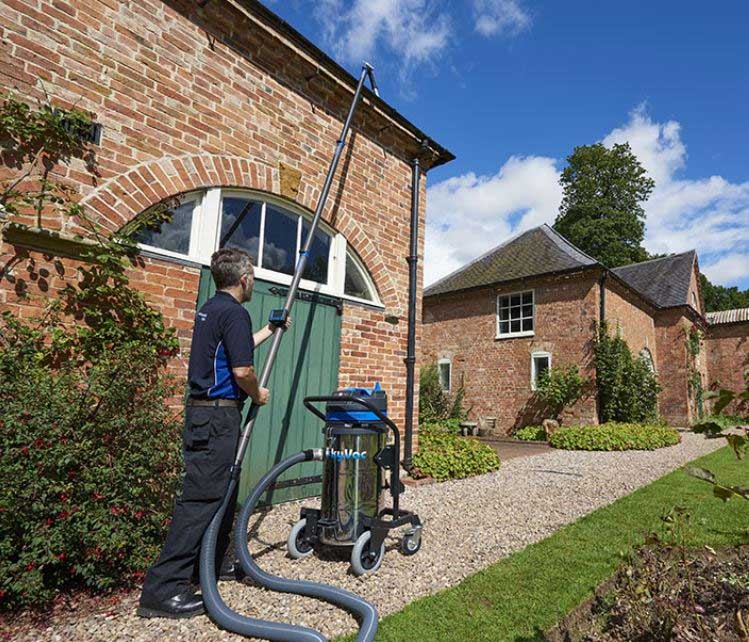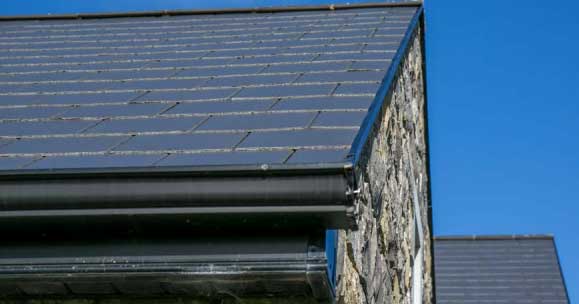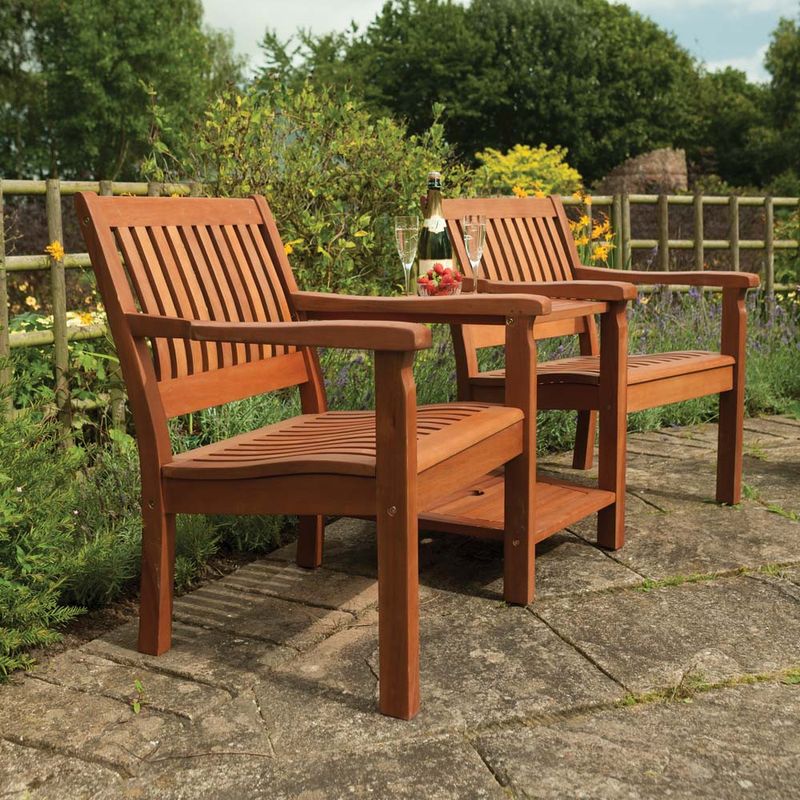Autumn is here.
And while we love seeing the leaves turn, wearing cosy jumpers and drinking delicious pumpkin spice beverages, there’s one thing about the autumn and winter months we certainly don’t like – storm damage.
You’re probably wondering:
How can we protect our homes from storms?
And how can we reduce the impact of storms?
At Roofing Superstore, we’re here to help!
Without further ado, let’s take a deep dive into the ultimate storm protection tips and advice and find out how to prepare for storms so you can mitigate damage to your home when a severe thunderstorm is forecast.
Table of contents:
- Keep gutters and drains clear
- Ensure the roof is well-maintained
- Make sure aerials and satellite dishes are secure
- Secure garden furniture and fences
- Remove overhanging or loose branches near the home
- Fasten doors and windows
- Secure rubbish bins
- What is windstorm prevention?
Keep gutters and drains clear

Keeping your gutters and drains clear is essential for preventing substantial household storm damage. Clogged gutters and drains can lead to water overflowing and damaging your roof, siding, foundation and landscaping.
With that in mind, here’s a step-by-step guide on how to maintain them:
Regular inspection
Perform routine inspections of your gutters and drains. This can be done quarterly or after heavy storms. Look for signs of clogs, damage or sagging gutters.
Remember:
Early detection can prevent major issues.
Clear debris
Remove leaves, sticks, twigs and any other debris from the gutters and downspouts. You can use your hands, a trowel or a gutter scoop for this task. Ensure that the entire gutter system is free from obstruction.
Flush with water
After removing the visible debris, use a garden hose to flush out the gutters and downspouts. Start at the end opposite the downspout and steadily work your way towards it. This will help dislodge any remaining dirt or debris.
Check for clogs
If water doesn’t flow freely through the downspouts, there may be a clog – which is a recipe for disaster. You can use a plumber’s snake or a pressure washer attachment specifically designed for gutters to clear stubborn clogs.
Inspect the downspouts
For even better storm protection, ensure that the downspouts are clear of debris and securely connected to the gutter system. You can also use a broom handle or long brush to push debris out of the downspouts.
Install gutter guards
Consider installing gutter guards or screens to help keep debris out while allowing water to flow through. There are various types available, so it’s a good idea to research which option is best for your home.
Consider rain barrels or diverters
Install rain barrels or diverters to collect and use rainwater. This reduces the amount of water flowing through your gutters, potentially decreasing the likelihood of clogs.

Ensure the roof is well-maintained

Ensuring your home’s roof is well-maintained is crucial for its longevity and to prevent serious storm damage to the roof that might require costly repairs.
Here’s a brief overview of what you need to do:
Regular inspection
As with your drains, you should perform visual inspections of your roof at least twice a year, ideally in the spring and autumn. Look for signs of damage, missing or loose shingles and any debris or moss growth. If you have a flat roof, you should check on it more often.
Clean debris
Remove leaves, branches and other debris from the roof’s surface, ensuring everything is neat and tidy. A clean roof will also add to your home’s kerb appeal.
Check for leaks
Inspect your loft for signs of water leaks, such as stains or dampness, after heavy rain. Repair any leaks once it’s stopped raining.
Replace damaged shingles
If you find damaged or missing shingles, replace them promptly to prevent water from infiltrating the roof.
Seal gaps and flashing
Ensure that roof vents, chimneys and flashing are properly sealed to prevent leaks.
Remove moss and algae
If you notice moss or algae growth, consider applying a roof-friendly treatment to prevent further growth.
Monitor for ice dams
Keep an eye out for ice dams on the roof edge during winter and address insulation and ventilation issues to prevent them.
Check for structural issues
Inspect the roof’s structural elements, such as trusses or rafters, for signs of damage or sagging.
Make sure aerials and satellite dishes are secure

While you’re attending to the roof, check any aerials and satellite dishes you might have to mitigate wind damage.
The thing is:
Ensuring that aerials and satellite dishes are secure is important to maintain good signal quality and prevent potential damage.
Here’s a brief explanation of how to do it:
Check mounting hardware
Regularly inspect the mounting brackets, bolts and screws that secure the aerial or satellite dish to your roof or wall. Ensure they are tight and in good condition.
Inspect the mast
Examine the mast (that’s the vertical pole supporting the aerial or dish) for signs of rust, corrosion or damage. If you notice any issues, replace or repair the mast as needed.
Securely attach cables
Check that the coaxial cables and any other wiring connected to the aerial or satellite dish are properly secured and not hanging loosely. Loose cables can cause signal interference and damage.
Check for alignment
If you notice signal problems, verify that the aerial or satellite dish is correctly aligned with the satellite or broadcasting tower. Adjust the direction if necessary to improve reception.
Consider reinforcements
If you live in an area of the UK that’s particularly prone to high winds or storms, consider adding additional support or reinforcement to the mounting structure. This can prevent the aerial or dish from getting dislodged during severe weather.
Next:
Secure garden furniture and fences

Securing garden furniture and fences is crucial to prevent UK storm damage and ensure safety in severe weather conditions.
Here’s what to bear in mind:
Anchor or store furniture
When strong winds are expected, anchor lightweight garden furniture, such as chairs and tables, or store them in a secure location like a garage or shed. Consider placing heavier objects like benches on flat, stable surfaces. Alternatively, you can use sandbags or weights to prevent them from toppling over.
Collapse umbrellas and awnings
Fold or collapse outdoor umbrellas and retractable awnings to prevent them from catching the wind.
Store cushions and accessories
Remove cushions, pillows and other accessories and store them indoors to prevent them from getting blown away or damaged.
Secure fences for even better storm protection
Regularly inspect your garden fences for loose or damaged panels and posts. Repair or reinforce them as needed to prevent them from collapsing in strong winds.
Temporary anchoring
If a severe storm is imminent, consider using temporary anchors or tie-downs to secure larger garden items like playsets, grills or statues.
Secure loose items
Pick up and secure any loose items in your garden, such as garden tools, toys, or pots, to prevent them from becoming projectiles.
Close and lock gates
Ensure that garden gates are securely closed and locked to prevent them from swinging open or being damaged in the wind.
Remove overhanging or loose branches near the home

Examine the branches to determine which ones need to be removed to prevent storm damages. Identify branches that are dead, damaged, diseased or overhanging your home’s roof, walls or utility lines.
Then, gather the necessary tools for the job, including a pruning saw or loppers for smaller branches and a chainsaw for larger ones. Make sure your tools are always sharp and in good condition.
Plan your cuts
Plan your cuts carefully to minimise the impact on the tree’s health. Identify the branch collar (the swollen area where the branch meets the trunk) and make your cut just outside this area to promote proper healing.
Cut the branches carefully
Cut the underside of the branch first, about 12-18″ away from the trunk. This prevents the branch from tearing and causing damage as it falls. Then, make a second cut slightly further out, just beyond the first cut, to remove the branch cleanly.
Dispose of the branches
After cutting, safely lower the branches to the ground using ropes or by cutting them into smaller, manageable sections. Dispose of the branches properly, either by mulching, composting or through local waste disposal services.
Fasten doors and windows

If you’re expecting a particularly windy storm, fastening doors and windows securely is essential to prevent serious damage to your home. Storms with strong winds can create pressure differences that can lead to doors and windows being blown open or broken.
Here’s how to secure them:
Reinforce entry doors
Ensure that entry doors have sturdy hinges with long screws that penetrate the door frame. You might want to consider installing deadbolt locks for extra security.
Secure sliding glass doors
Install impact-resistant sliding glass doors or use storm shutters or plywood covers to protect them. Use a security bar or rod in the track to prevent the door from being forced open.
Add window storm protection
Install storm windows, which provide an additional layer of protection against strong winds and flying debris. Think about using window film designed to reinforce glass and prevent shattering during storms.
Upgrade window and door frames
Reinforce window and door frames with steel or aluminium bracing. Use impact-resistant or laminated glass in areas prone to storms.
Use weatherstripping
Apply weatherstripping around doors and windows to seal any gaps and prevent wind and rain from entering. It’s a good idea to check and replace weatherstripping regularly to maintain a tight seal.
Secure rubbish bins

Securing your bins in a storm is essential to prevent them from becoming projectiles and causing damage or safety hazards.
Here’s how to secure wheelie bins in a storm:
Bring the bins inside
The safest option is to bring your wheelie bins inside your garage or shed before the storm hits. This will prevent them from being affected by strong winds.
Use bin clips or straps
If bringing the bins indoors is not feasible, consider using bin clips or straps specifically designed for securing wheelie bins. These devices can be easily attached to the bin and anchored to a stable object, like a post or a fence, to keep them in place.
Weighted lids or sandbags
Some wheelie bins have lids that can be weighted down to prevent them from blowing open in the wind. Alternatively, you can use sandbags or other heavy objects placed on top of the lids to keep them closed.
Position the bins strategically
Before the storm, position the wheelie bins in a sheltered area, such as close to a wall or behind a sturdy structure like a shed or garage. This can help reduce their exposure to wind.
Anchor with ropes
Secure the bins to a sturdy post or fence using ropes or straps. Make sure the attachment is tight to prevent the bins from tipping over.
What is windstorm prevention?

Windstorm prevention involves taking proactive measures to minimise the potential damage and risks associated with strong winds or severe thunderstorms.
The goal is to safeguard lives, property and the environment by reducing their impact so you can mitigate damage and ensure adequate storm protection.
The thing is:
It’s essential to develop an emergency plan of action that includes procedures for securing your property in the event of a strong storm and stopping wind from causing severe damage.
Bottom line:
Stay informed about weather conditions through local forecasts and alerts. Knowing when a storm is approaching will allow you to take timely preventive actions.
For the best storm protection, have all the necessary tools and materials on hand, such as plywood, sandbags and fasteners, and act well in advance.



























